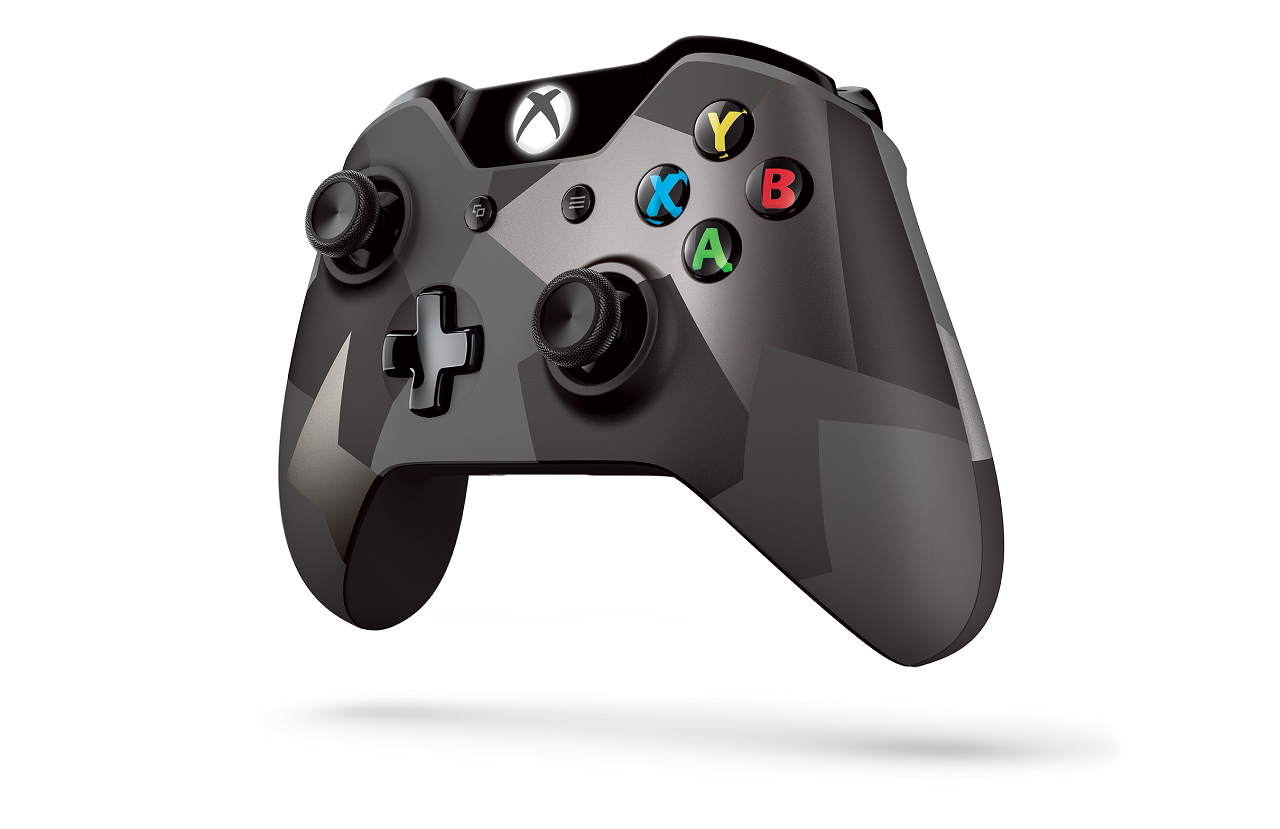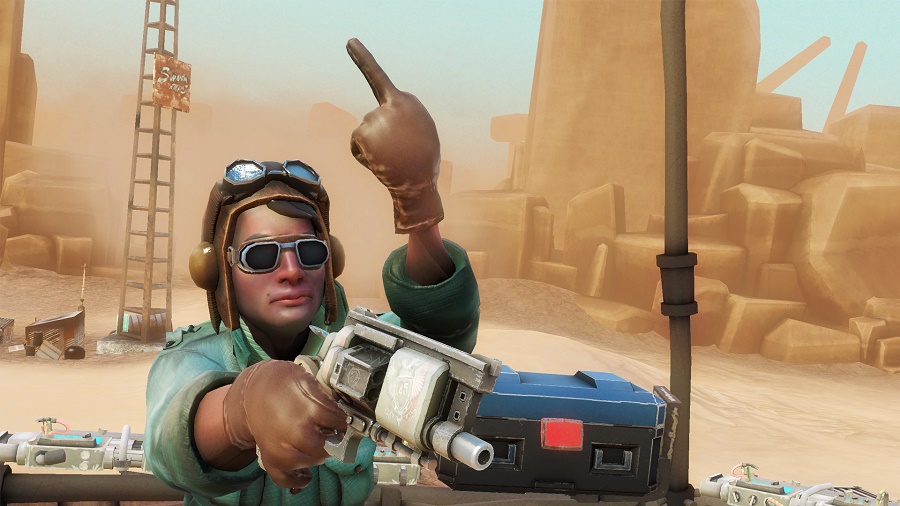I’ve got my VR wings now what with countless hours using the Oculus Rift development kit 2 (DK 2) and Samsung’s Gear VR with the Note 4 and S6 Edge. I’m also pretty up to speed with room-scale VR now having played through a number of titles that utilize it well enough on the recently released HTC Vive. The Lab, The Brookhaven Experiment, Tilt Brush , Job Simulator and Vanishing Realms to name but a few experiences. My play area isn’t massive and in fact feels quite restrictive at around 2m x 2m but it’s enough to work with thanks to the Vive’s handy chaperone system which acts as a constant reminder that danger lurks close by should I venture too far from the centre of the room, and by danger I mean punching a hole into a 50″ TV set or smashing a fist through an ornate mirror.
I’ve noticed a number of people raising objections against room-scale VR for several reasons (some more valid than others), such as the novelty wearing off, too physical for those who just want to sit down, and the issue of walking in any direction being impractical i.e always coming up against walls in the real world and having to turn around 180 degrees to continue the movement. I think from the offset one has to be clear that by definition room-scale VR isn’t trying to present a full open world for people to walk around. I see many comparisons to games like Skyrim or Fallout 4 and being able to walk across open worlds where the only solutions for something like that are treadmill devices. However, these are perhaps too out of reach for most people and without developers supporting them appear to be quite limited in practice.
Let’s be clear, room-scale VR isn’t trying to accomplish open world gaming, well not in the conventional sense because it is possible. The challenge is, not everyone has the play space for full walking movement so developers have worked with the idea that you can still enjoy room-scale experiences which incorporate movement in smaller play areas with “room” being the key word here.
I have to refer to the game Vanishing Realms as one of the better examples of room-scale VR from a gameplay perspective. Vanishing Realms is an action role playing adventure set within a fantasy world. It offers low detailed graphics compared to the likes of Dark Souls for example. It’s designed to work on a number of systems and therefore I assume keeps the graphics simplistic as a result. One can only imagine how a game with a bigger budget and more detail would look offering a similar experience, but I digress.
In Vanishing Realms You’re thrust into its world with the option to explore quite freely, it’s not an on-rails experience and allows the player to move around its dungeons, corridors and open spaces via way of teleportation. This is where you point to an area on the ground , or above/below with the wand controller and then instantly move there in a blink of an eye. Now there’s two things to take from this mechanic. One, the idea of the character we assume in the game is bound by the same physics we are rather than being like the X-Men character Nightcrawler (who also teleports). Two, the idea we have to walk everywhere to enjoy a video game. Now not everyone is going to gel with teleportation and proclaim it ruins immersion and is counter intuitive, yet at the same time in conjunction with being able to move around a limited area each time you do “teleport” to a spot, offers a far greater sense of immersion than merely walking past scenery you pay no real attention to just to get from A to B. In this sense the developer has shifted the focus on more condensed detail to make teleportation compliment the experience yet achieve the same end goal. There are other devices that could be use to accomplish movement such as using a vehicle , simulated walking using the thumbsticks or touchpads, however for close quarters scenarios teleportation in this case just works and without causing motion sickness which some people suffer from.
If you think about how hard it is to show non-gamers how to use an Xbox One controller for the first time as an example, using thumbsticks to move and look, buttons and triggers to shoot and interact, it’s pretty hard to grasp without practice. Teleportation on the other hand is a device that anyone can pick up and use, there’s nothing complicated about it and it fits within the VR space allowing anyone to dive in and “get it” without the need for complex mastery of buttons and sticks. It’s an instant gratification system that doesn’t exclude anyone. It has to be viewed as just a different way of doing things for those coming from a gaming background, for anyone else it’s simply the norm.
I believe the biggest issue for gamers is the need to let go of ingrained ideas of how we interact with video games. It’s been the domain of the controller for so long and even though Nintendo and Microsoft have adopted other means with the Wii and Kinect respectively, it’s hard wired into expectations of what’s possible in games. Room-scale and VR in general takes the interaction to a whole new level because no longer are you remotely controlling a game character to perform actions, you’re actually doing it yourself. This is an incredible contrast to simply sitting back and pressing a button to cause a reaction. So in Vanishing Realms for example, you can physically lean forwards and peer over a table, reach out and pick up a coin or collectible, examine it and place it in your belt pack. You can walk around the table and select other objects from it that are out of reach. It’s the feeling of actually being there, performing actions that can’t be replicated via traditional control methods which automate everything.
What I’ve gleaned from room-scale VR is the focus of the game changes. It’s no longer about moving at speed from one area to the next but rather taking more time to explore the near environment. I felt like I was in the dungeon surrounded by imminent danger (thanks largely to the sense of scale and audio) forcing me to take tentative steps to progress forwards just like you would in reality. With a controller using a 2D display in the same scenario you’re safe, overconfident, and rush through without giving the environment a second thought by way of design. In VR and with room-scale, being able to pick up a flaming torch and light candles, illuminate the path ahead and interact with the environment changed the focus, slowed the game down but at the same time made me appreciate more what I was actually accomplishing. This is a powerful feeling and used very well in the experiences I’ve had.
Combat is a massive part of gaming, I mean, who doesn’t want to be the heroic adventurer? This is why we game, the fantasy of being somewhere and something different. Room-scale VR allows you to become that adventurer, but much like the Wii, you’re in the game attacking with sword strikes or shooting with guns using your arms swings and finger movements. Vanishing Realms gives you a shield for blocking or deflecting projectiles and the fact you physically have to hold your arm up is convincing and gratifying. So is having the mechanic of blocking, and counter-attacking your opponents. You can get truly lost in the role playing here and feel like you’re a part of the game thanks to the Wands, room-scale and design. The movement you have adds a greater sense of dynamism never seen before in video games and its for this reason alone that room-scale VR wins you over. Yes it’s physical and you’ll potentially get a workout, but it’s so engrossing you’ll have no doubt it’s simply way beyond controller input gaming for the fantasy escapism we’re looking for when we game.
Probably one of the biggest take-aways from room-scale VR that you get is when you defeat a foe or accomplish a task, there’s a great sense of achievement. Your heart races during combat for example due to the fact you’re physically performing the actions rather than lazily pressing a button, and once the opponent is defeated, relaxation, a deep breath and the sense “I did that with my own skill” before you move on to the next task. You can obviously get the same sense of accomplishment being skilled using a controller, but there’s a disconnect with the game, it’s you pressing buttons or using thumbsticks. In VR using wands the onus is on you and the physical. If the game is designed well enough to give you just the right amount of pressure or challenge, you’re left feeling very much part of the game, like you lived through it.
Room-scale VR shouldn’t be seen as the only way to play video games or experience VR, but rather an alternative for those who want to feel more involved in certain games. Obviously for some people it’s not going to be practical and after an hour or more it can be quite taxing mentally and physically. Developers need to think outside the box a little with the design process and conjure up new ideas to suit the limitations people might have and as I’ve seen so far, they are doing just that. It’s no gimmick and perhaps it’s those who suggest it is haven’t spent enough time experiencing it to its fullest to appreciate what it offers. That said, there needs to be a level of acceptance from the gaming audience though, that interactions from the past might not be the domineering method for future VR experiences. HTC/Valve/Oculus/Sony have all seen this because they are invested in the idea that when it’s done right room-scale and/or Hand Tracking VR is absolutely brilliant.
The caveat now though is sadly the majority of content available for current VR devices sits within a low quality spectrum when compared to current traditional games. Unfortunately there’s a number of titles which appear to be more like technical demos rather than fully fledged games. What’s needed is developers with a big budget being given license to create something most people will agree is a must have AAA VR experience, but sadly due to the low numbers of early adopters and little return on the investment we’re not likely to see anything of that magnitude just yet. It seems of all the major VR players, Sony is in fact the most heavily invested when it comes to software, with a number of standalone VR titles alongside AAA games with added VR support being presented. Come October when the Playstation VR launches the others might have something of their own to brag about.









